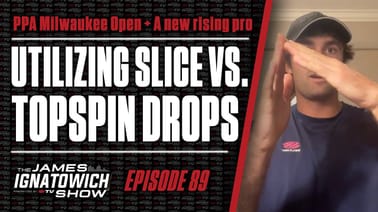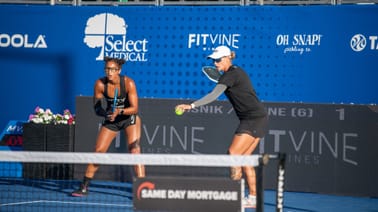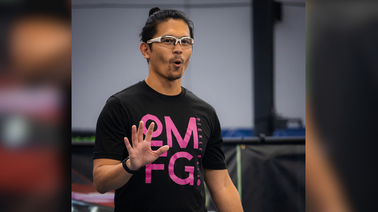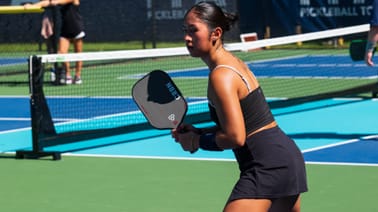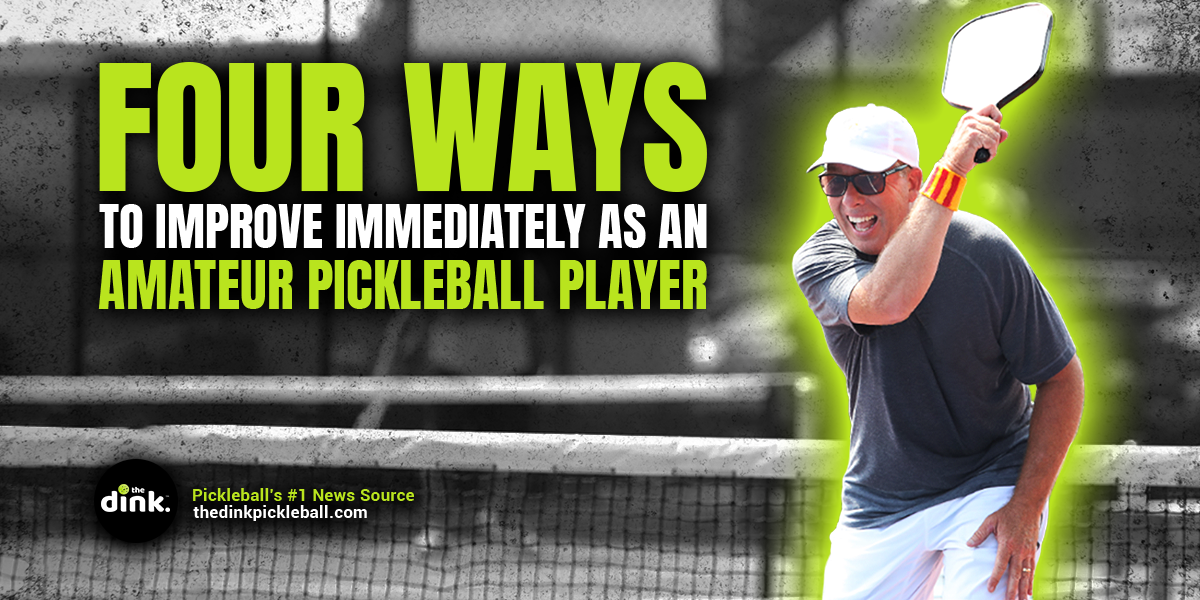
We live in an instant-information age.
Quick how-to videos, Google results and one-click shopping are at our fingertips at all times and with the click of a button.
However, there are some things that still take time. Getting better at pickleball is one of them. It can take weeks to months to learn and develop a new shot or strategy.
Here are four ways you can improve your game more quickly.
Only drop or reset from the transition zone
This one may seem like low-hanging fruit, but driving from the midcourt is something I see all the time when watching amateur players play pickleball, especially in recreation or competition.
If you are between the baseline and kitchen (especially closer to the kitchen), do not speed up the ball or hit anything except a reset or drop. The only exception to this is if your opponent somehow gives you a high floater that you can angle down with pace. The odds of that happening are low.
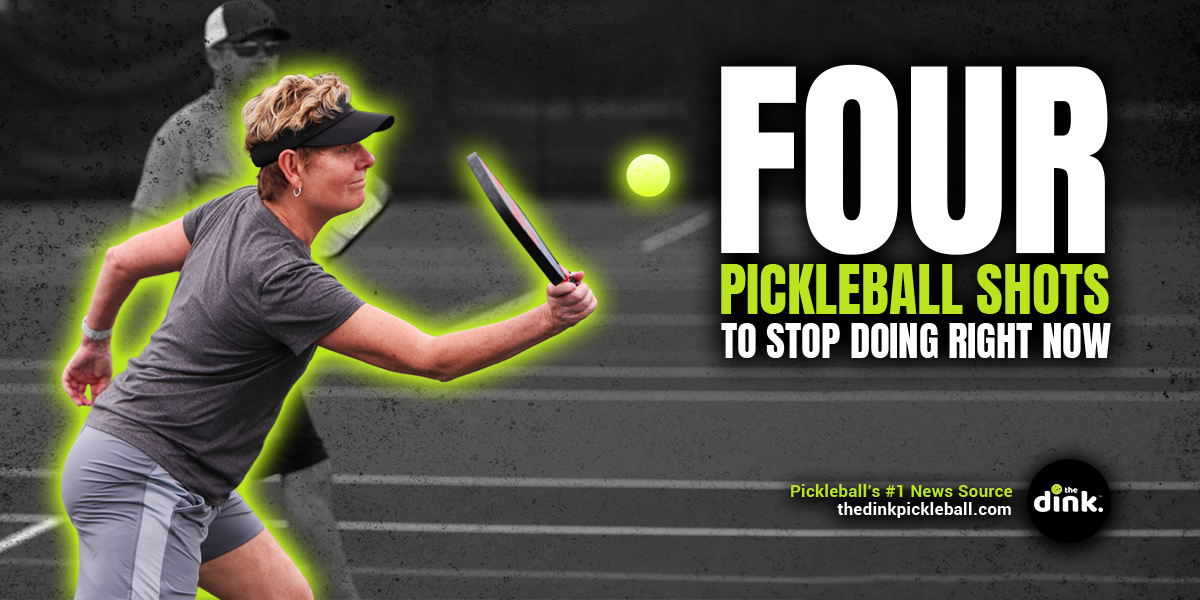
Resetting and dropping from the transition zone is a crucial skill, and will give you time to work your way forward to the kitchen, where you can finally play offense and attack your opponents. Too many amateurs will drive or speed up from the midcourt, resulting in errors or attackable balls for their opponents. Stop doing it and instantly become better. Drill your resets and drops from the transition zone.
Be able and willing to hit 10 unattackable dinks in a row
Dinking isn’t fun or sexy. In fact, it can be almost mind-numbingly boring. But it is still arguably the most important shot in the game, and for good reason. At the amateur level (and honestly now in the pros, too), it is rarely a player’s most confident or consistent shot. Very few amateurs are willing to stay in a dink rally for long.
I will be honest – 10 is an arbitrary number, but I think it proves my greater point. If you can successfully achieve the first piece of advice above and get to the kitchen consistently, this is your next play to get better more quickly.
Being able and willing to hit unattackable dink after dink and moving your opponents around will produce good results instantly. The dinks need to be slightly better than adequate and be unattackable, otherwise you will just feed your opponents balls to be aggressive on.
If you can hit solid dinks, your opponent will either eventually miss, or get bored and try to force a speed up. You should be able to see this coming (or expect it if they are refusing to stay in a dink rally), and sit all over their shots and shut them down. Consistent dinking is still a fundamental part of the game, and now at the amateur level, it will become a quick way to get better.
Stop missing your serves and returns – it’s not worth it
Disregard this part if you are reading this as a singles player. For amateurs of all levels (even you 4.5s and 5.0s), stop missing serves and returns. Don’t pancake or baby either one in, but going bigger is not worth the risk in doubles.
Obviously, you can ignore this if you have a huge lead or are getting killed in a game. But, if the score is even relatively close, you will be better off just making a solid, neutral serve and return.
The return is the much harder shot of the two. Make sure to shorten your swing, split step as your opponent is about to serve to you, and try to take the server’s pace and just redirect the ball. Down the middle is a great spot in doubles to return to, as it will cause your opponents to have to talk and you take away the possibility of missing the return wide. A few feet past the kitchen is a nice amount of depth to aim for.
As for the serve, throw away the desire to be a hero and hit a big one. Earning 1-3 service winners but missing 1-3 serves a game still comes out to a net of zero. That isn’t even taking into account when you miss your serve. If you hit 1-3 service winners prior but miss your serve at 9-9 in the third game, you are actually worse off.
Drill 60% of the time, play 40% of the time
I recently wrote about how important it is to mix up who you play with. When it comes to improving quickly, you should spend more time drilling than playing games. I believe a ratio of 60-40 drills to playing for rec play is good.
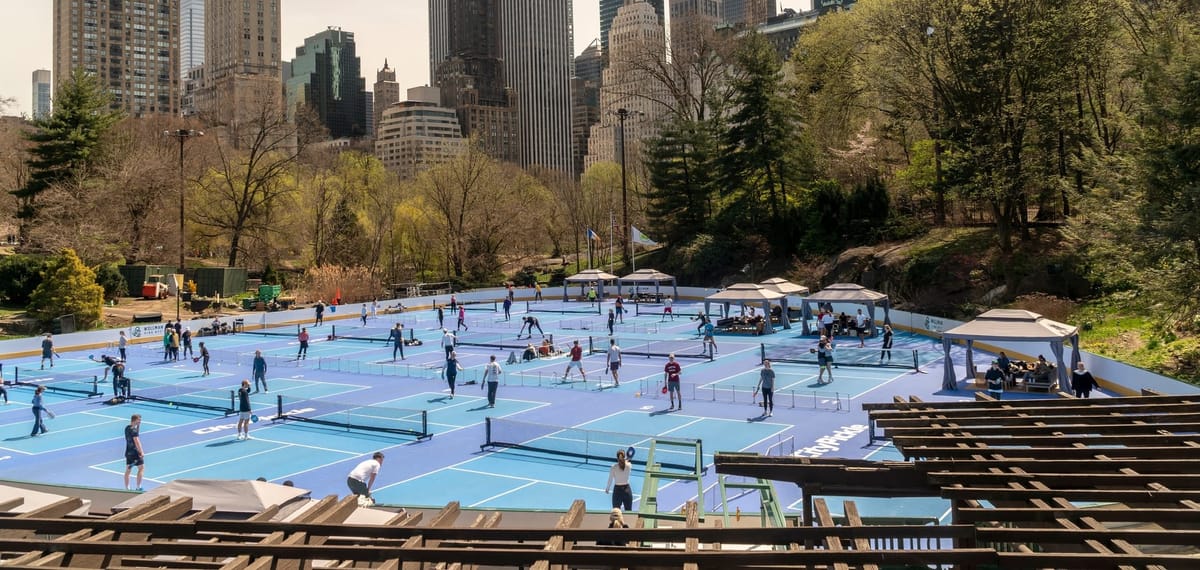
I realize drilling is not as fun, and it takes finding a drilling partner of similar skill who also wants to drill. But there is a reason the majority of pros spend most of their time drilling. Honing in your shots and working on developing your weaker shots results in a higher level of play.
Playing solely rec is good for match experience, but it makes it harder to develop since you are going to use the shots that you are most comfortable with in order to win.
Try to find someone as committed to drilling and getting better as you are. Work through all the shots in pickleball (dinks, drops, drives and fast hands battles) and spend extra time on the shots that you struggle with in games. The goal is to feel comfortable to hit all shots when you play (whether rec or competitively) in order to match up against your opponents. Drilling will get you there.
Enjoy the grind, and remember, you can’t dink all day if you don’t start in the morning.

Eric Roddy
Eric is a PPA tour pro living in Charlotte, NC, sponsored by PROXR. In addition to playing PPA events, he teaches pickleball 2-3 hours a week, enjoys golf, and listening to his favorite band Goose.



